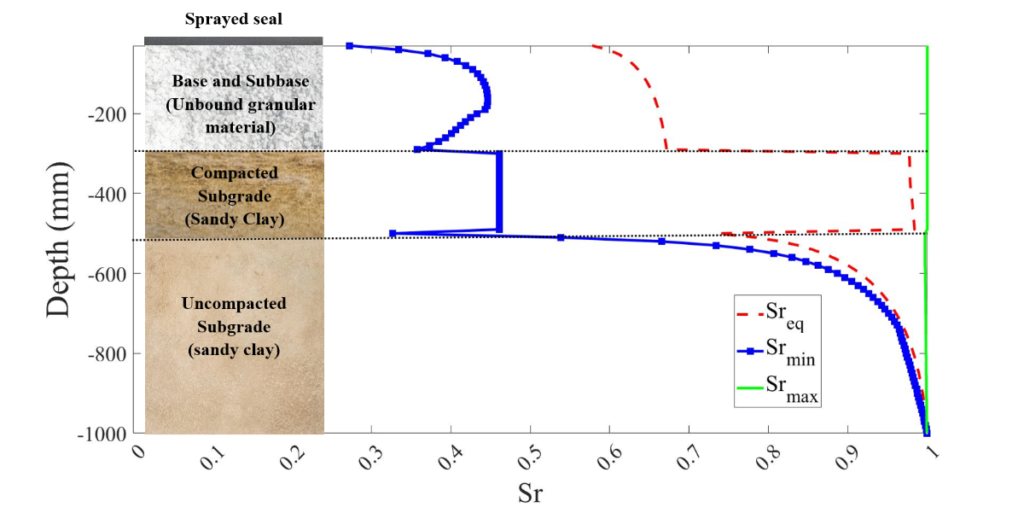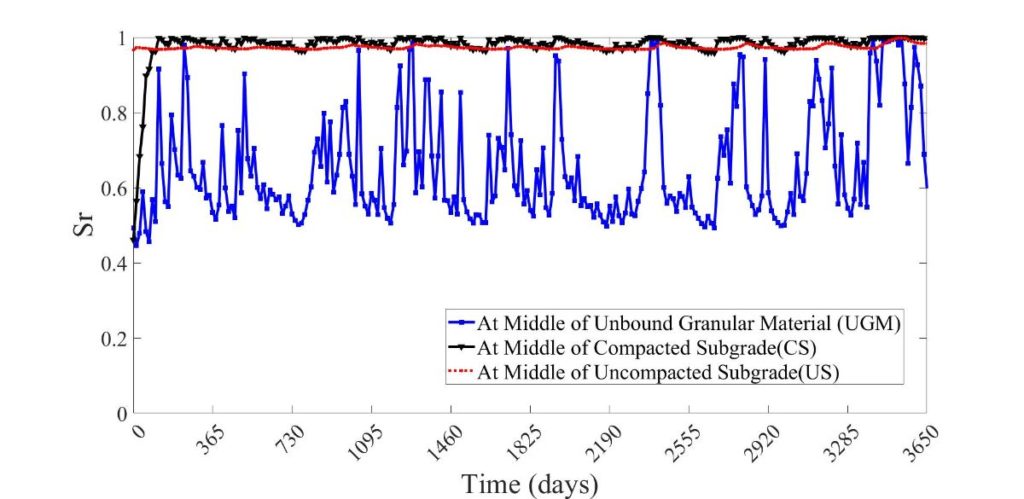
Advancement of pavement design for practical use incorporating climatic effects for unbound granular pavements with thin seal
(Project IH18.01.4)

SPARC Hub is the Smart Pavements Australia Research Collaboration Hub. It aims to make road, airport and dockyard pavements smart, low cost, long-lasting, safe, green and adaptable to future transport demands. The Hub undertakes transformative research for future-proofing the pavement industry and innovating next generation pavements.
This present project intends to develop a practical approach to incorporate climatic effects in pavement design and analysis learning from the experiences from other countries.
Geo-Con Products is proud to be a part of this new and important research, with our specialist Geotechnical Engineer, Rodrigo Palma, as a partner investigator.
Source Article: (Project IH18.01.4)
Environmental factors such as moisture and temperature are identified as significant factors that lead to road failures. After the completion of pavement construction, moisture conditions in the pavement layers eventually come to equilibrium with the atmospheric conditions and surrounding environment over time. Even after reaching equilibrium, the moisture content in unbound granular layers and subgrade can change due to the influence of environmental phenomena such as precipitation, water infiltration into shoulders, water table fluctuations, vapour movements inside pavement due to thermal gradient, etc. Because of these temporal moisture variations that occur due to climatic variations, strength and stiffness properties are also affected leading to the accumulation of pavement rutting as plastic deformation.
Different countries have adopted different approaches to incorporate temporal moisture variations into pavement design. The current Australian pavement design guide (Austroads 2017) has adopted a conservative approach by guiding the designer to evaluate the strength/stiffness parameters by testing unbound granular materials (UGMs) at their highest moisture content likely to occur during the service life based on annual rainfall and drainage conditions. However, the current design is yet to advance to incorporate temporal variations of moisture due to climatic factor changes during the service life. Currently, a workable model is not available for Australia to accurately predict the moisture variations in pavements after the construction. Thus, this research project attempts to address this drawback and advance the current pavement design in the Australian context.

Figure 1: Pavement depth vs minimum, maximum and average Degree of Saturation (Sr) under Cranbourne, Victoria climate for 10 years (from 2001 to 2010)

Figure 2: Degree of saturation (Sr) vs time at the middle of each pavement layer under Cranbourne, Victoria climate for 10 years (from 2001 to 2010)
The current research develops a practical approach to incorporate the temporal moisture variations due to climatic factors. First, a 1D numerical model which represents the middle 1/3 of the pavement was considered where the rutting is significant and the moisture movements are predominantly vertical without significant influence from the lateral flow. This model was developed by capturing the essential physical processes of coupled moisture, vapour and heat flow through unsaturated media. Following the Austroads guidelines and state-of-the-art of unsaturated soil mechanics principles, a particular preference was given to the degree of saturation (DoS) evaluations during the lifetime of the pavement. The parameters of the developed model were calibrated using targeted laboratory experiments and literature datasets in such a way that the model becomes usable to the field conditions.
The developed model was validated using an experimental dataset obtained from a test pavement constructed in NSW, Australia. The validated model was then equipped to simulate, predict and evaluate the moisture variations in unbound granular pavements under different climatic conditions in Australia (a simulation example involving a three-layer pavement system is shown in Figures 1 and 2). The effects of key factors such as water table depth, initial conditions and UGM properties were evaluated and certain trends of DoS variations have been identified through sensitivity analyses performed. The model was employed to determine the equilibrium suction and DoS under different climatic conditions and the equilibrium behaviour of unbound granular pavements with thin seal was investigated.

Figure 3: Column test – Laboratory replication of actual pavement cross-section under three different seal conditions
The model will be further validated through experimental results of column tests that represent the actual pavement cross-sections with three different sprayed seal conditions (Figure 3). This model can also be equipped to evaluate the preference of new materials such as mixtures of recycled materials in pavement layers, and innovate new materials and pavement layer configurations. The model can be extended to examine the effects of impending climate change on unbound granular pavements.
Research Team


